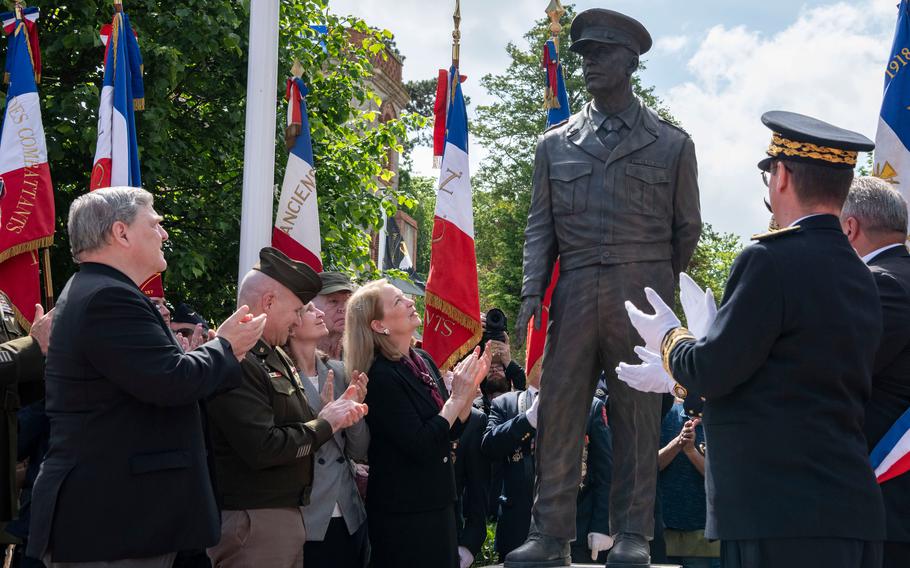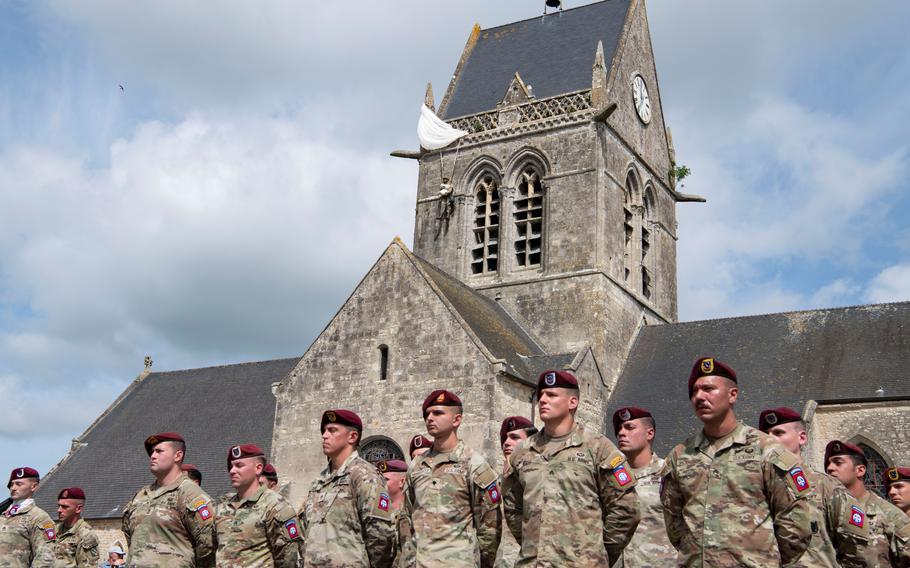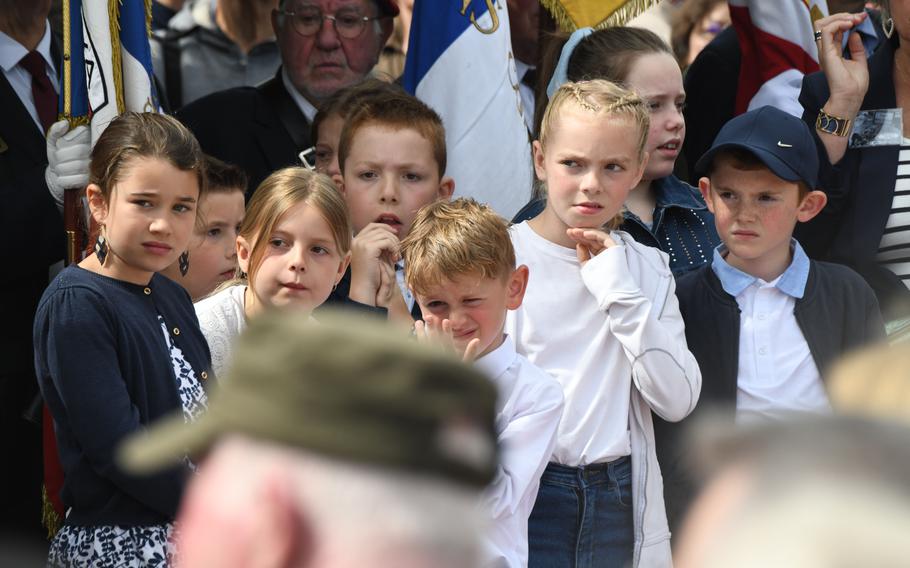SAINTE-MÈRE-ÉGLISE, France — American military leaders past and present were on hand Monday to unveil a statue of Dwight D. Eisenhower in the heart of this small village in Normandy, nine miles from the World War II landing site at Utah Beach.
Residents in the region think of the former general and U.S. president fondly for ordering the D-Day invasion of France on June 6, 1944, when he served as the supreme commander of the Allied Expeditionary Forces.
The invasion went on to liberate Normandy and the rest of France from Nazi occupation and ultimately led to the Allied victory in World War II.
“We live with Eisenhower’s legacy today,” Gen. Christopher Cavoli, who serves as NATO supreme allied commander in Europe, said at the unveiling ceremony. “(He) built trust across nations and truly forged an alliance.”

From left, Mark Milley, retired general and former chairman of the Joint Chiefs of Staff, NATO supreme allied commander in Europe Gen. Christopher Cavoli and Susan Eisenhower help unveil a statue of Dwight D. Eisenhower in Sainte-Mère-Église, France, Monday, June 3, 2024. (Phillip Walter Wellman/Stars and Stripes)
At a 1943 conference, President Franklin D. Roosevelt and British Prime Minister Winston Churchill reaffirmed plans for a cross-channel assault into occupied France that was code-named Overlord.
When the two leaders told Soviet leader Joseph Stalin that the invasion would be possible within a year, Stalin insisted that a leader of the operation be named, according to the National Archives.
Eisenhower was assigned to the position in December 1943.
After months of preparation, which included a buildup of troops on the coast of southern England, Eisenhower ordered Operation Overlord to proceed on June 6.
He met with troops just before they set off to participate in the assault, including soldiers assigned to the Army’s 82nd and 101st Airborne Divisions, who were expected to suffer significant casualties.
“He deeply understood that the millions he commanded were actual people and not numbers,” retired Army Col. Keith Nightingale said at Monday’s ceremony. “He was their leader more than their commander, and it made all the difference.”
Mixed units of the 82nd and 101st Airborne Divisions quickly occupied Sainte-Mère-Église, making it among the first towns liberated by Allied forces.
“It’s part of the culture here. They still hug us as Americans 80 years later,” American Legion national commander Daniel Seehafer said Monday. The Legion was the primary sponsor of the statue.
Respect here for Eisenhower, who already has two memorials dedicated to him in Normandy’s Bayeux and Tournier, continues to this day.
“He’s very popular,” said Normandy resident Danielle Duboscq, who was born days after the D-Day invasion.
Duboscq, who said she was at the ceremony to represent her late father, a member of the French resistance, was also at a ceremony in the nearby town of Carentan in 1954 that Eisenhower attended.
“I saw him, but I didn’t know who he was. I was 10 years old,” Duboscq said, showing a black-and-white photo taken at the time.

U.S. soldiers attend a ceremony in Sainte-Mère-Église, France, to honor Dwight D. Eisenhower on Monday, June 3, 2024. A paratrooper mannequin hangs from the church behind them to honor the paratroopers who helped liberate the town in 1944 under Eisenhower’s leadership. (Phillip Walter Wellman/Stars and Stripes)
Eisenhower’s great-granddaughter, Caroline de Carvalho, praised Sainte-Mère-Église at Monday’s event.
“You are a testament to all of us of the importance of preserving our memory of the Allied victory,” de Carvalho said. “May all of us gathered here today continue to serve as a bridge by learning from and retelling this story for generations to come.”
The statue unveiling was one of numerous events happening in Normandy this week to mark the 80th anniversary of D-Day.
Retired Gen. John Nicholson, former commander of U.S. Forces in Afghanistan, and retired Gen. Mark Milley, former chairman of the Joint Chiefs of Staff, were also in attendance.
“(Eisenhower) fought this battle in order to create a better peace,” Milley said. “And his message to all of us today resonates as it did in 1944, and that message is two words: never again.”

French children attend a ceremony in Sainte-Mère-Église, France, to honor Dwight D. Eisenhower, Monday, June 3, 2024. (Phillip Walter Wellman/Stars and Stripes)